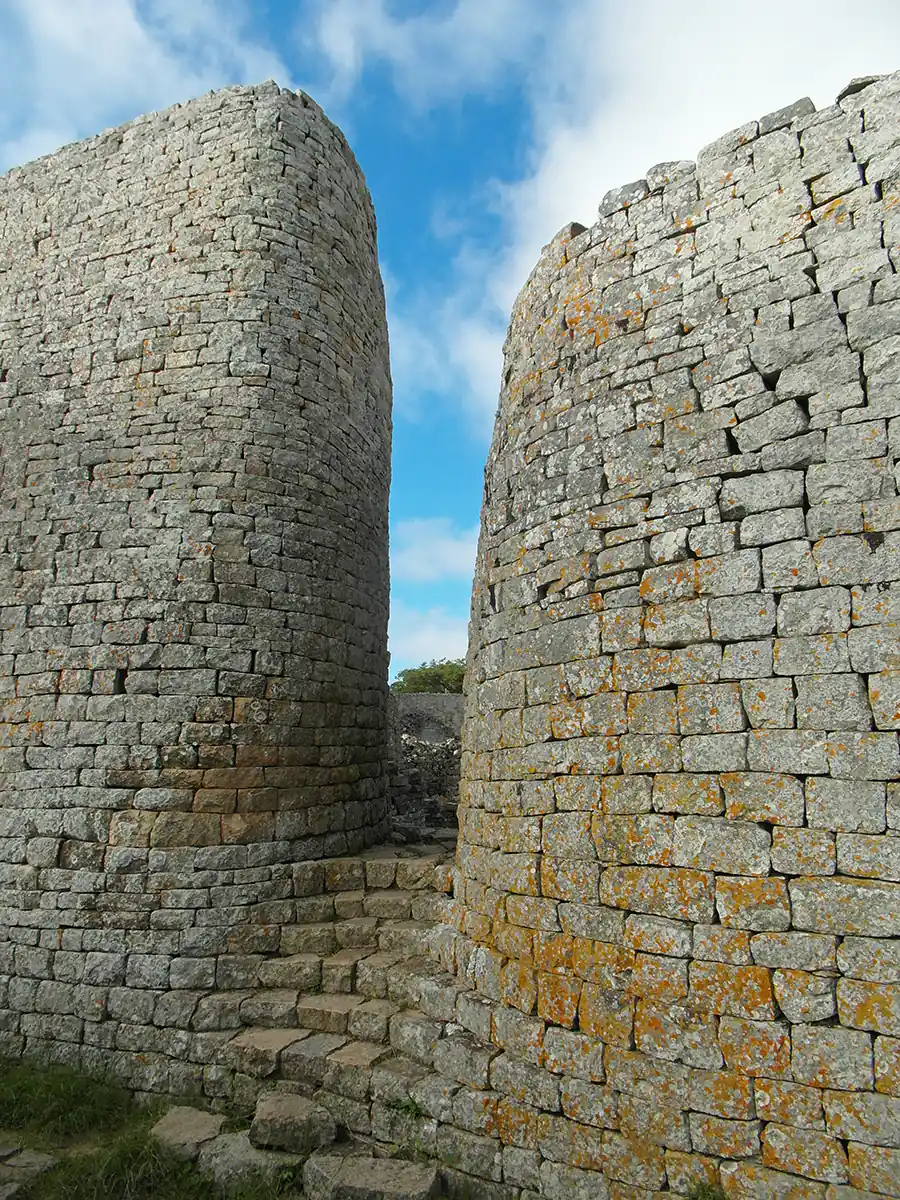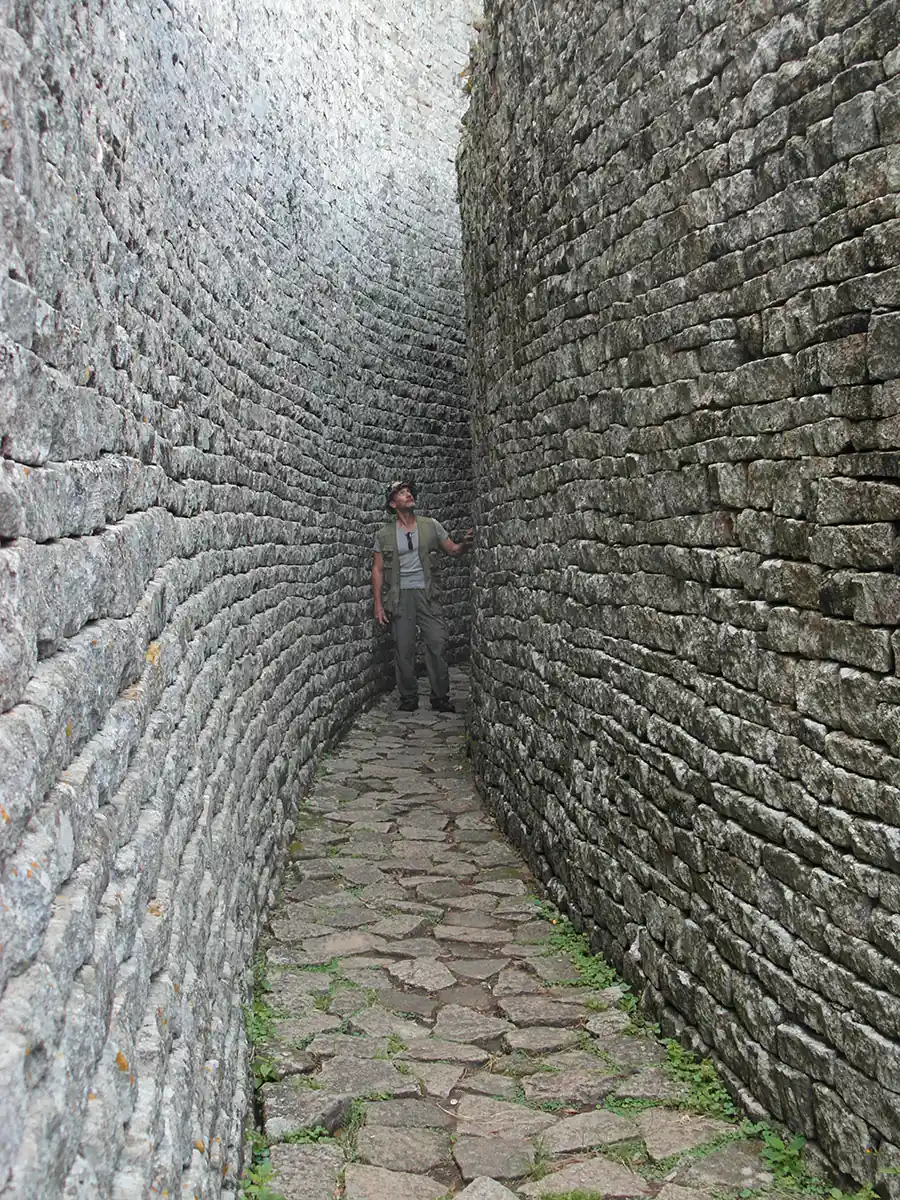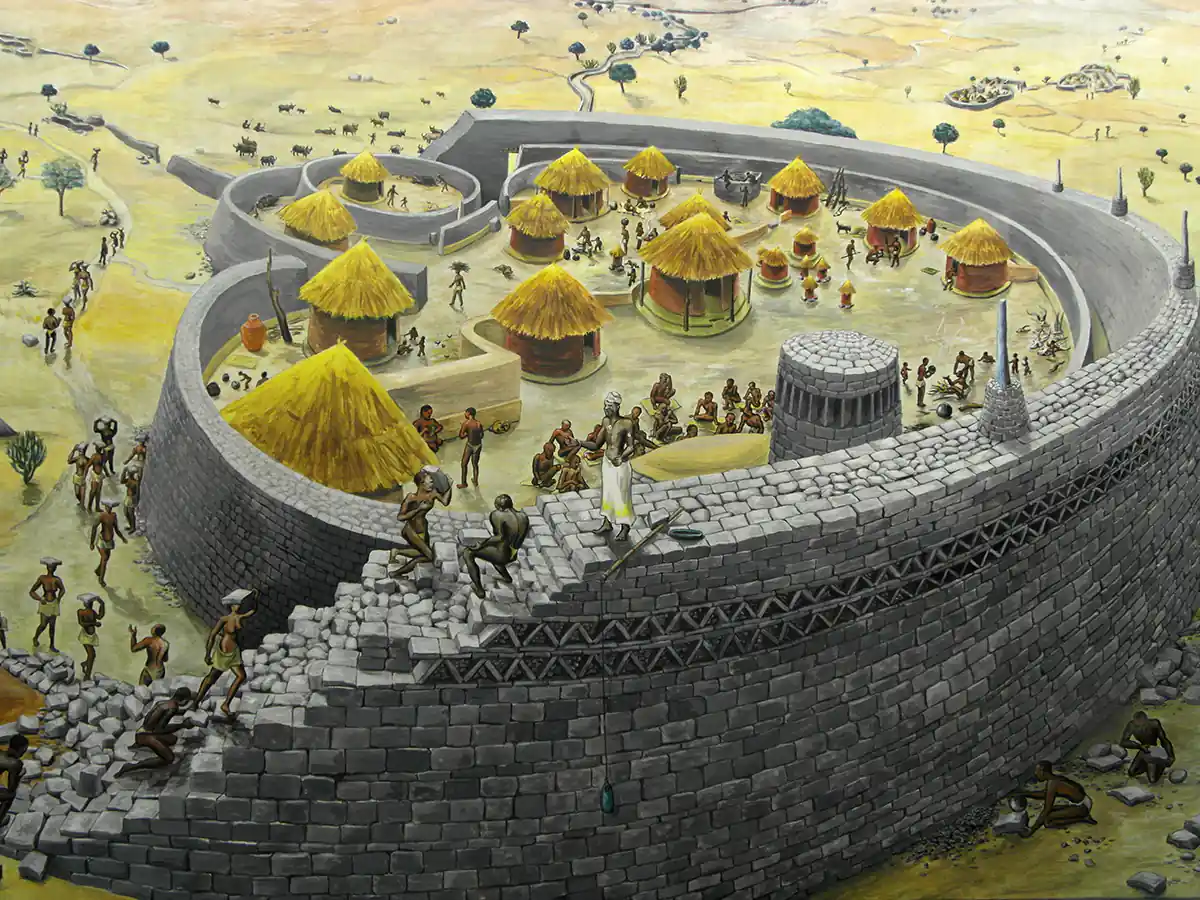Great Zimbabwe Ruins
Great Zimbabwe is a ruined city in the southeastern hills of Zimbabwe near Lake Mutirikwe and the town of Masvingo. It was the capital of the Kingdom of Zimbabwe during the country's Late Iron Age. Construction on the monument began in the 11th century and continued until the 15th century. The exact identity of the Great Zimbabwe builders is unknown, and various hypotheses have been proposed as to who these masons may have been. Local traditions recorded in the 18th and 19th centuries assert that the early Lemba constructed the stoneworks. However, the most popular modern archaeological theory is that the ancestral Shona erected the structures. The stone city spans an area of 722 hectares (1,780 acres) that, at its peak, could have housed up to 18,000 people. UNESCO recognizes it as a World Heritage Site.
Great Zimbabwe is believed to have served as a royal palace for the local monarch. As such, it would have been used as the seat of political power. One of the structure's most prominent features was its walls, some over five meters high. They were constructed without mortar. Eventually, the city was abandoned and fell into ruin.
The earliest known written mention of the Great Zimbabwe ruins was in 1531 by Vicente Pegado, captain of the Portuguese garrison of Sofala, who recorded it as Symbaoe. The Portuguese traveler Antonio Fernandes may have made the first European visit in 1513-1515. However, passing en route a few kilometers north and about 56 km (35 mi) south of the site, he did not refer to Great Zimbabwe.
The first confirmed European visits were in the late 19th century, with site investigations starting in 1871. Later, studies of the monument were controversial in the archaeological world, with political pressure being put upon archaeologists by the government of Rhodesia to deny its construction by native Africans. Great Zimbabwe has since been adopted as a national monument by the Zimbabwean government, and the modern independent state was named for it. The word "Great" distinguishes the site from the hundreds of small ruins, now known as 'zimbabwes,' spread across the Zimbabwe Highveld. There are 200 sites in southern Africa, such as Bumbusi in Zimbabwe and Manyikeni in Mozambique, with monumental, mortarless walls; Great Zimbabwe is the largest.
There are various mysteries about Great Zimbabwe that the orthodox archaeological interpretation cannot explain. One concerns the so-called Hill Fortress above the primary complex of ruins. It is seriously deficient as a military structure. There are controlled entrances, but there are also several weak points where attackers could easily penetrate the fortress, and the northwestern side is virtually undefended. Additionally, the hilltop fort has no natural water sources, making it vulnerable to sieges.
Another mystery concerns the lack of burials in the vicinity of the ruins. If a settled population existed at Great Zimbabwe, most of its dead were not buried there. One implication of the rarity of burials is that Great Zimbabwe was designed mainly for ritual use and perhaps permanently sheltered only a few priests.
Finally, there is compelling evidence, presented by archaeologist-astronomer Richard Wade of the Nkwe Ridge Observatory in Johannesburg, that the site may have been used as an astronomical observatory. Central to his conclusion is the stone monoliths' location on the Great Enclosure's eastern arc. According to Wade, they line up with the rising of the Sun, Moon, and bright stars at certain astronomically significant times of the year. One of the more striking alignments that Wade has observed is the rise of three bright stars in Orion over three of the monoliths on the morning of the winter solstice, the shortest day of the year.
One monolith could also be an eclipse predictor. Wade says it is notched in such a way that "the pattern and amount of notches can only be a record of the Venus' alignments with Earth, and we know that the location of Venus in the sky can be used to predict eclipses. It also has crescents and discs carved into it." Perhaps most contentiously, Wade believes he knows why a conical tower that has previously baffled archaeologists was built. "The conical tower lines up precisely with the supernova known to have exploded in Vela 700 to 800 years ago," he says. Historical records make no mention of it, an omission that does not surprise Wade since the dying star appeared over the Southern Hemisphere, which at the time had virtually no literate cultures. But oral legends in the region lend credence to the supernova idea, Wade said. The Sena people of Zimbabwe say that their ancestors migrated from the north by following an unusually bright star in the southern skies.

Martin Gray is a cultural anthropologist, writer and photographer specializing in the study of pilgrimage traditions and sacred sites around the world. During a 40 year period he has visited more than 2000 pilgrimage places in 160 countries. The World Pilgrimage Guide at sacredsites.com is the most comprehensive source of information on this subject.






